Yemen Portal


Yemen, officially the Republic of Yemen, is a country in West Asia. Located in southern Arabia, it borders Saudi Arabia to the north, Oman to the northeast, the south-easten part of the Arabian Sea to the east, the Gulf of Aden to the south, and the Red Sea to the west, sharing maritime borders with Djibouti, Eritrea, and Somalia across the Horn of Africa. Covering roughly 455,503 square kilometres (175,871 square miles), with a coastline of approximately 2,000 kilometres (1,200 miles), Yemen is the second largest country on the Arabian Peninsula. Sanaa is its constitutional capital and largest city. Yemen's estimated population is 34.7 million, mostly Arab Muslims. It is a member of the Arab League, the United Nations, the Non-Aligned Movement and the Organisation of Islamic Cooperation.
Owing to its geographic location, Yemen has been at the crossroads of many civilisations for over 7,000 years. In 1200 BCE, the Sabaeans formed a thriving commercial kingdom that colonized parts of modern Ethiopia and Eritrea. In 275 CE, it was succeeded by the Himyarite Kingdom, which spanned much of Yemen's present-day territory and was heavily influenced by Judaism. Christianity arrived in the fourth century, followed by the rapid spread of Islam in the seventh century. From its conversion to Islam, Yemen became a center of Islamic learning, and Yemenite troops played a crucial role in early Islamic conquests. Much of Yemen's architecture survived until modern times. For centuries, it became a primary producer of coffee exported in the port of Mocha. Various dynasties emerged between the 9th and 16th centuries. During the 19th century, the country was divided between the Ottoman and British empires. After World War I, the Kingdom of Yemen was established, which in 1962 became the Yemen Arab Republic (North Yemen) following a coup. In 1967, the British Aden Protectorate became the independent People's Democratic Republic of Yemen (South Yemen), the first and only officially socialist state in the Arab world. In 1990, the two Yemeni states united to form the modern Republic of Yemen, with Ali Abdullah Saleh serving as the first president until his resignation in 2012 in the wake of the Arab Spring.
Since 2011, Yemen has been enduring a political crisis, marked by street protests against poverty, unemployment, corruption, and President Saleh's plan to amend Yemen's constitution and eliminate the presidential term limit. By 2015, the country became engulfed by an ongoing civil war with multiple entities vying for governance, including the Presidential Leadership Council of the internationally recognized government, and the Houthi movement's Supreme Political Council. This conflict, which has escalated to involve various foreign powers, has led to a severe humanitarian crisis.
Yemen is one of the least developed countries in the world, facing significant obstacles to sustainable development, and is one of the poorest countries in the Middle East and North Africa. In 2019, the United Nations reported that Yemen had the highest number of people in need of humanitarian aid, amounting to about 24 million individuals, or nearly 75% of its population. As of 2020, Yemen ranked highest on the Fragile States Index and second-worst on the Global Hunger Index, surpassed only by the Central African Republic. Additionally, it has the lowest Human Development Index out of all non-African countries. Yemen is one of the world's most vulnerable countries to climate change and among the least prepared to handle its effects. (Full article...)
Selected article -

Yemen is one of the oldest centers of civilization in the Near East. Its relatively fertile land and adequate rainfall in a moister climate helped sustain a stable population, a feature recognized by the ancient Greek geographer Ptolemy, who described Yemen as Eudaimon Arabia, meaning "Fertile Arabia" or "Happy Arabia". The South Arabian alphabet was developed at latest between the 12th century BC and the 6th century AD, when Yemen was successively dominated by six civilizations that controlled the lucrative spice trade: Ma'in, Qataban, Hadhramaut, Awsan, Saba, and Himyar. With the 630 AD arrival of Islam, Yemen became part of the wider Muslim world, where it has remained. (Full article...)
List of selected articles
|
|---|
Selected biography -
Abdullah Yahya al-Sallal (Arabic: عبد الله يحيى السلال, romanized: ʿAbd Allāh Yaḥyā al-Sallāl; 9 January 1917 – 5 March 1994) was a Yemeni military officer who was the leader of the North Yemeni Revolution of 1962 and served as the first President of the Yemen Arab Republic from 27 September 1962 until his removal on 5 November 1967. It was his government that abolished slavery in Yemen. (Full article...)
General images -
Selected city -
Jabal Haraz (Arabic: جَبَل حَرَاز, romanized: Jabal Ḥarāz) is a mountainous region of Yemen, between Sanaa and Al-Hudaydah, which is considered to be within the Sarat range. In the 11th century, it was the stronghold of the Sulaihid dynasty, many of whose buildings still survive today. It includes Jabal An-Nabi Shu'ayb, the highest mountain in Yemen and the Arabian Peninsula. (Full article...)
List of selected cities
|
|---|
Selected picture -
Selected cuisines, dishes and foods -

Haneeth is a slow-roasted lamb dish from Yemen. It is very popular dish throughout the Arabian Peninsula. It is cooked in a tannour oven and has a different spice rub. Haneeth is usually served on a plate of rice. (Full article...)
Related portals
Religions in Yemen
Arab states
Related portals
Categories
Topics
Related portals
Religions in Yemen
Arab states
Related portals
Associated Wikimedia
The following Wikimedia Foundation sister projects provide more on this subject:
-
 Commons
Commons
Free media repository -
 Wikibooks
Wikibooks
Free textbooks and manuals -
 Wikidata
Wikidata
Free knowledge base -
 Wikinews
Wikinews
Free-content news -
 Wikiquote
Wikiquote
Collection of quotations -
 Wikisource
Wikisource
Free-content library -
 Wikiversity
Wikiversity
Free learning tools -
 Wiktionary
Wiktionary
Dictionary and thesaurus
More portals











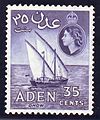




















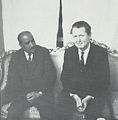
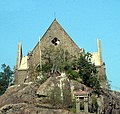


















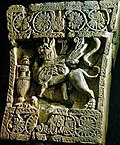









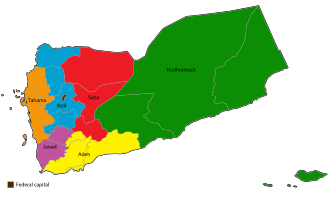












You must be logged in to post a comment.